New Native Plant Garden at The New York Botanical Garden
The greatest education in the world is watching the masters at work. (óMichael Jackson)
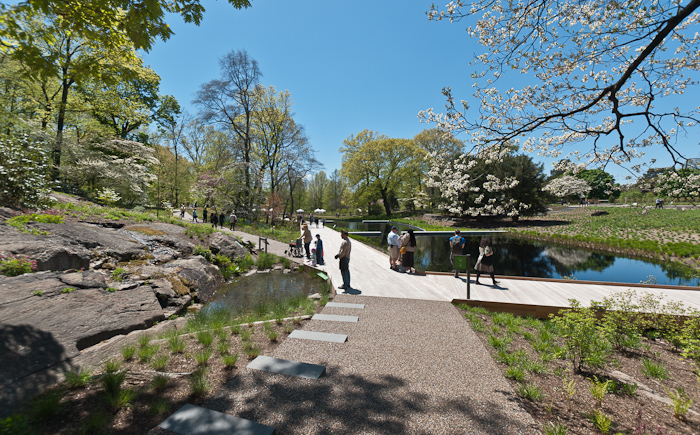
Just over the George Washington Bridge, Manhattan Island and few miles north – a mere six mile trip from Bergen County -lies what may be the most impressive display of native plants in The New York tri-state area. The New York Botanical Garden (NYBG) recently unveiled their new native plant garden to enthusiastic crowds on the weekend of May 4th. A local adventure from the previous weekend allowed me to meet NYBG forest manager, Jessica Schuler and through her, Jody Payne the curator of NYBG’s new garden.
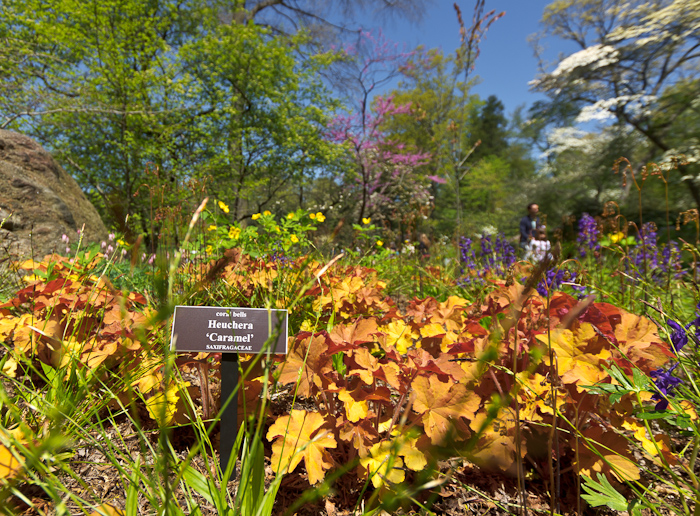
Webster Avenue looks like just another busy thoroughfare upwards of 125th street. Latin flavor. Caribbean spice. Urban residential. A quick right turn up a small bluff and NYBG appears, like some undiscovered parcel of Ueno or maybe Hyde Park. On my short walk to the new space, I was treated to several visual appetizers: period architectural gem here; impressive Victorian glass house there; Manolo ValdÈs sculpture over there, and even a wild turkey casually strolling through the grounds. The new native plant garden has a deep pedigree to uphold, exclusively with native plants to boot. Thankfullyóno sublimelyóit does and even takes that pedigree to the uncharted territories of this new millennium.
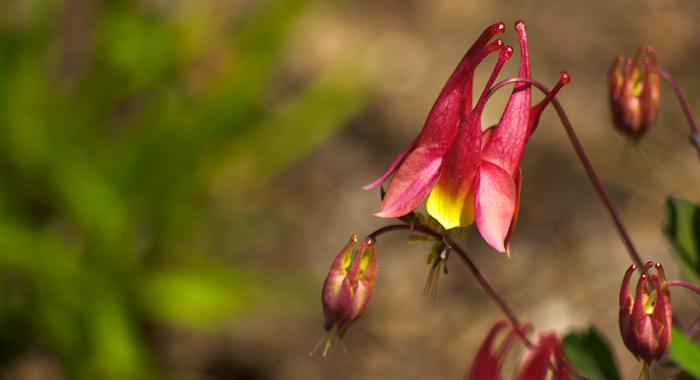
Five years in the making, the new garden, designed by Sheila Brady of Oehme van Sweden, is larger than two and a half football fields and contains several micro-environments. Native Plant landscape might be a more appropriate name. Three parallel paths form an irregular circuit allowing visitors to traverse a woodland, wetland, meadow, glade and even a xeriscape. An exquisite (exquisite as in, why didn’t I think of that?) boardwalk made of locally sourced black locust allows visitors to stroll along the terraced wetland that creates a hub for the entire space. The garden and its architectural features share that ever-pleasing paradoxical style of simple/complex modern: (It looks simple but when you try to do it yourself… well, your version just sucks. And that makes it complex). The new garden was established with a generous grant from the Leon Levy Foundation. The space was originally designated as a native plant oasis by Elizabeth Gertrude Britton wife of NYBG founding botanist, Nathaniel Lord Britton.
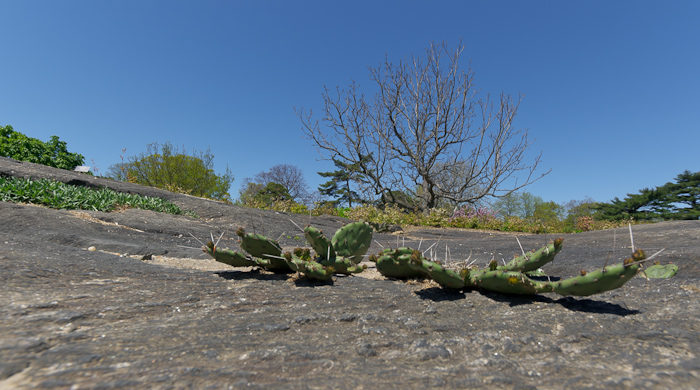
With the hundreds of spring ephemerals in bloom at the time of my visit, it took no arm-twisting to follow curator Jody Payne through the woodland, first. This section is strategically laced with woodland forbs such as trillium, heucheras, dutchman’s breeches and myriad others. These were the forbs I could remember. Like many of my other recent native plant adventures I found myself in a ‘fish or cut bait’ tailspin, vacillating between trying to blog about the new garden and just flat out enjoying the space. In each section I saw different plants suited particularly for their climates: Sun lovers in the dry meadow, irises down near the woodland water’s edge, hardier shrubs around the border and even cacti thriving on protruding bedrock in the xeriscape.
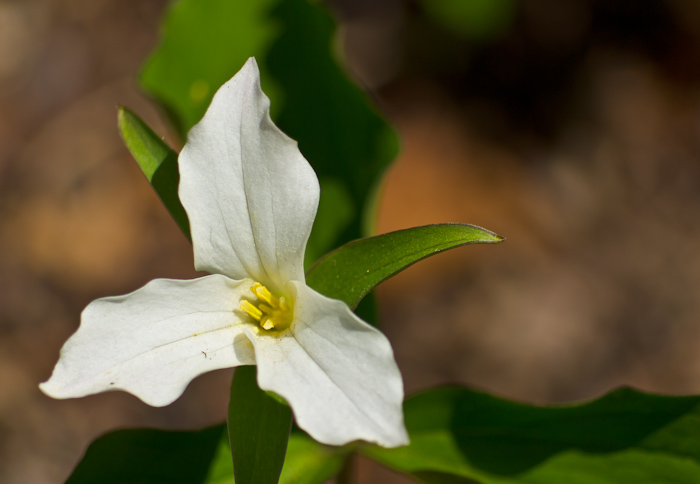
Many of the plants I attempted to designate I got wrong but Jody knew each of them like a mother knows her children. It was fascinating to talk with her about the pragmatic and aesthetic concerns of a native plant gardener not just on a large scale but a botanical garden scale. As a visitor, you enjoy what’s in front of you: pretty colors of spring flowers, verdant new green and the fleeting warm sun. Jody, consummate curator however already is thinking about these ephemeral flowers going dormant and the native ferns taking their place as the garden transforms in early summer. The dry meadow was a dance of soil and newly emerged plants but in the height of the summer that will be the star. In the fall other elements will have their debut as previous elements subside and there is even a natural and native spectacle for the winter months to come.
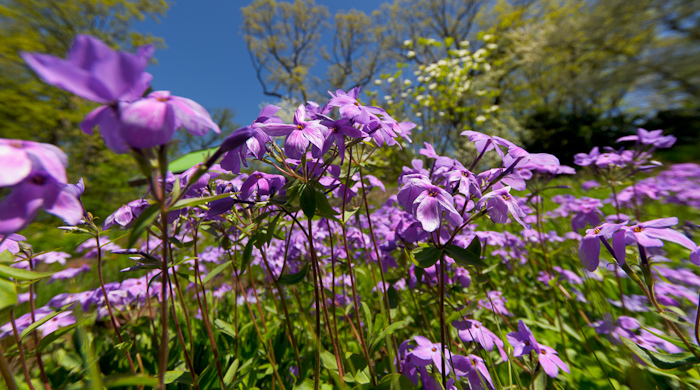
NYBG did not shy away from using cultivars of native plants in their garden. While many of the chosen plants are native to the Mid-Atlantic region several specimens represent the entire range which spreads from New Brunswick, Canada; down to southern Virginia and across to Mississippi. Jody mentioned these facts, frankly and without apology… and Behold! My inner native plant Nazi was strangely quiet, maybe even at peace. It is a botanical garden after all. It was refreshing to learn about the practical realities of creating a botanical garden space. High spectacle, allure and deep variety make any ‘professional’ garden worth the trip. This native plant botanical garden is no exception.
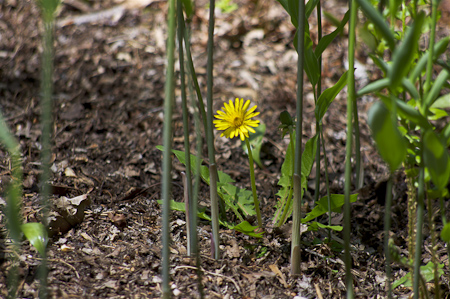
How it should be: There are only 3 official non-native plants in the new native plant garden: the Japanese Toreyas (Torreya nucifera), adjacent to the education pavilion. I did happen to spot this lone dandelion (Taraxacum officinale) among the rhododendrons and azaleas in the hardy section of the woodland. With aggressive species like Japanese knotweed fighting their way up through asphalt concrete, I can’t fault NYBG for one stinking dandelion… but I was kind of hoping I’d get a stuffed animal for finding it. I’m sure its gone by now. The NYBG staff is stellar and made that opening weekend even more notable with their plant knowledge and hospitality.
Visit the new Native Plant Garden at The New York Botanical Garden.
There is no clever/fancy way to say this. This may be one of our closest examples of an all native environment. Although it’s been meticulously crafted by humans, the keepers of this garden have an honest and choreographed methodology that will allow this garden to grow into its own natural and manicured personal best. For native plant aficionados this can be your local Mecca. For garden civilians, come see why some of your tree hugger gardening friends launch into a tirade when they see you bringing home an SUV full of pachysandra every spring. Marvel at this masterful example of local exotic. Remember, if the climate in your mid-Atlantic green space matches the climate of the native plants you see in the Bronx, there’s a good chance those same plants will grow and show for you. Its a myth that native plants are easy but that does not take away from the sheer pleasure of seeing so many unusual plants that can and probably should be growing in your yard.May 22, 2013Posted in PLACESTags: Bronx, native plant garden, native plants, New York Botanical Garden Leave a comment
